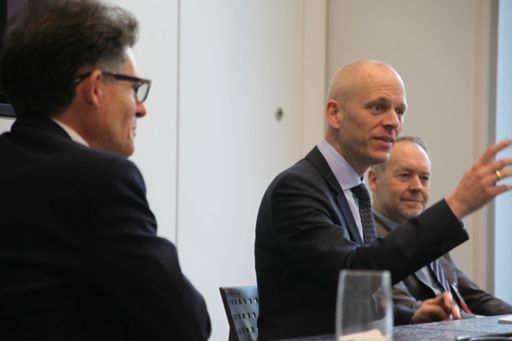Improving communication between stakeholders: Auditor perspectives
The need to increase and improve communication between auditors, investors and other stakeholders has been one of the key themes in my discussions with KPMG audit partners in member firms across our network.
A perceived lack of communication was one of the problems highlighted by the global financial crisis. There was a sense that the world expected more from us in terms of communication, including expanding reporting around risks or findings in our audits.
Better and more communication about what matters to our stakeholders is one of the ways in which the audit profession can improve its relevance and restore trust.
Opening up communication
As auditors, we glean huge amounts of information and insight into a company, and the risks it faces, during our work — but only a limited amount of that is communicated to the outside world. A lot of it stays inside the organization, in discussions with audit committees that range across a whole raft of key issues such as internal controls, risk management and IT systems.
So one of the key challenges facing us as an audit profession is finding a way to communicate more about our work, without breaching any client confidentiality.
Investors and other users of our reports are sure to welcome more information — just as, if you’re buying a house, you’d welcome the chance to talk to the surveyor.

Expanded auditor reports
The good news is that this is something that has now started to happen, in the form of expanded auditor reports. Recognizing the need to move beyond narrow, binary audit reports that give a pass/fail opinion, these reports have become established in a growing number of countries and have been very positively received.
These reports are all part of giving outside stakeholders a deeper and fuller view of the considerations and judgments made by the auditor. Another helpful step facilitating greater communication has been the requirement in some countries — such as the US and the Netherlands — for the auditor to appear at companies’ AGMs and be available for discussion.
A further challenge, though, is to make communication a more continuous process, rather than once a year in the audit report. Perhaps an end goal should be to have a continuous audit process and provide assurance on information on a contemporaneous or real-time basis. Clearly, that’s something that will need to be discussed and worked towards as developments in technology begin to make this a possibility.
A role for everyone to play
Auditors, investors and audit committees all need to be better communicating and engaging with each other – which became one of the principal themes in the later phases of the Value of Audit program when investors and audit committees joined the discussion.
Audit committees have a vital role to play — and a reporting function to the outside world as well. Healthy dialogue between audit committees and shareholders is essential. Shareholders also need to fully engage and look beyond merely the headline numbers.
Another key piece in the communication puzzle is corporate reporting. There is an important role for better and more joined-up corporate reporting — such as integrated reporting. In colleague discussions, there has been a feeling that the current financial reporting model has led to a narrow focus on compliance and not enough on broad communication. Integrated reporting and reporting around non-financial and non-GAAP information is needed to provide the full picture.
Improving communication with and between investors, audit committees and other stakeholders is one of the profession’s key priorities — and while progress has been made in recent years, there is still a lot further to go.
All references to 'KPMG', 'us' and 'we' refer to KPMG's network of member firms.
Connect with us
- Find office locations kpmg.findOfficeLocations
- kpmg.emailUs
- Social media @ KPMG kpmg.socialMedia

